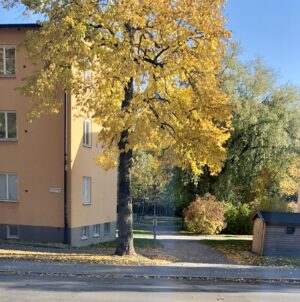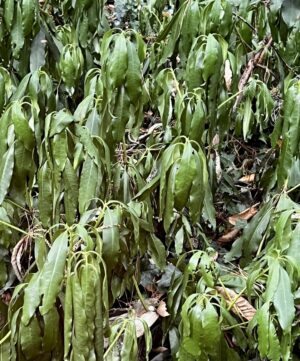Trees mitigate urban heat

With global temperatures rising and many places facing extremes of temperature, cities and urban environments often face the brunt of these climate extremes. Cities absorb and hold onto the energy of the sun, creating ‘urban heat islands’. Recently, the temperature in New Delhi soared to a record high of 126.1oF (52.3oC), and other areas of India also suffered from the heat wave that claimed lives.
At a personal level, the shade of a tree can offer a place of refuge on a blisteringly hot day but a neighbourhood can benefit from the careful and strategic planting of trees. Greater tree cover can mean that neighbourhoods are measurably cooler than those with few trees.
If a heat wave is prolonged, then the physiological stress that people experience builds, affecting the old and young particularly. Extreme heat / temperatures can also result in elevated levels of ozone, which affects people with asthma. High temperatures may also be accompanied by high humidity and if the air has a high level of water vapour this makes it difficult for people to lose heat through sweating. As water evaporates from the skin, its change of state (liquid to vapour) takes heat from the body.
Researchers at UCLA analysed the ‘effects’ of four heat waves that occurred in the early years of the 21st century in Los Angeles, they focused on areas that varied in
- tree cover and
- pavements and road cover (essentially impermeable surfaces).
They also gathered information on ‘heat related’ visits to medical facilities. They found that greater tree cover (and more reflective surfaces) reduced the number of heat-related medical interventions.
Whilst it might be agreed that increasing tree cover in urban settings is a good idea, there are practical problems.
 Firstly, which trees to plant? Ideally, the trees planted should be able to cope with the changing climate. We don’t know what the climate will be like in 20 or 50 years but ideally the trees planted now should be able to cope with what nature might ‘throw at them’.
Firstly, which trees to plant? Ideally, the trees planted should be able to cope with the changing climate. We don’t know what the climate will be like in 20 or 50 years but ideally the trees planted now should be able to cope with what nature might ‘throw at them’.- Secondly, caring for the trees. After planting, trees are vulnerable. They need care and protection. They need water - which is becoming an increasingly scarce resource in some parts of the world. Planting more trees needs to be coupled with increasing ‘green areas’ where water can permeate after rainfall into natural aquifers or water storage systems. Community involvement is also needed so that the trees are not only planted in areas where they will give the greatest benefit, but where people want them and will nurture them.
Los Angeles now has an Urban Forest Management Plan. It aims to increase tree canopy in particular areas, locating areas to plant trees and collaborating with the residents of the areas.
Comments are closed for this post.
